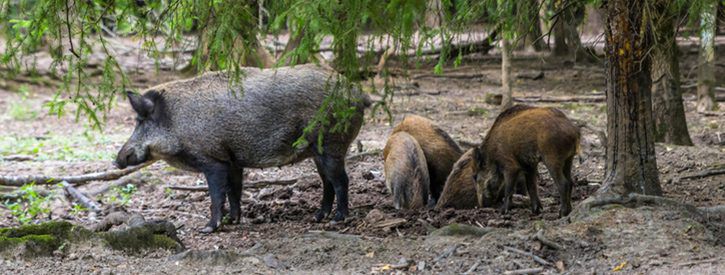Wild pig problems? Statewide workshops — one in Limestone — show landowners how to control them
Published 6:30 am Wednesday, July 26, 2017

- Wild pigs roam Alabama, damaging habitat and agricultural fields and sometimes threatening wildlife, experts say.
Picture a gigantic, hairy, wild boar terrorizing the region, maiming and killing people in its path. This is the crux of the 1984 horror movie “Razorback,” a classic film about a feral pig that goes on a rampage in the Australian outback. (Your life is probably not complete until you see this movie.)
Wild hogs of a smaller size but a larger number are a problem right now in Alabama.
Trending
“Regardless of whether you’ve got agricultural land, whether you’ve got land for recreational use or whether you’ve got forested land because you enjoy nature, wildlife or hunting. Whatever the function of the land, if you have wild hogs they are going to negatively impact or destroy it,” said Chris Becker, Alabama Cooperative Extension System coordinator for Limestone County.
Workshop in Limestone, elsewhere
Alabama residents can learn how to rid their property of feral hogs at one of five Managing Wild Pig Damage workshops being held throughout the state in July and August, Becker said. There will be one in Limestone County from 9 a.m. to 2 p.m. Tuesday, Aug. 1, at the Limestone County Sheriff’s Rodeo Arena at 18118 Alabama 99, west of Athens. (For directions, call 256-232-5510.)
For $15 — which includes lunch and handouts — participants will learn:
• Wild pig history, biology and ecology;
• Wild pig control methods;
Trending
• How to trap wild pigs — including an outdoor demonstration of trap designs and techniques; and
• How to obtain money for pig traps.
To attend a workshop, go online to the Extension calendar at www.aces.edu/go/749 and sign up or mail a check to Managing Wild Pig Damage Workshop, 602 Duncan Drive, Forestry & Wildlife Sciences Building, Auburn, AL 36849. (Include the date and location of the workshop you wish to attend.)
For more information, call: 334-844-1010.
Origin of the species
You can thank Spanish explorer Hernando de Soto for today’s wild hogs in the United States; he brought the first 13 pigs from Europe to Tampa Bay, Florida, in 1539, according to a story about the history of the pork industry published in 2009 by the Austin Chronicle.
Most of the pigs brought to this country wound up on the dinner table as bacon, chops, sausage and other dishes. Others escaped and became feral. Today, the ancestors of those first wild pigs destroy $800 million in agricultural crops each year by rooting up seeds, Becker said. The nation spends $1.5 billion a year trying to repair their damage and prevent their spread, he said.
Known as voracious omnivorous rooters, feral hogs destroy other lands and habitats and pose a serious threat to native wildlife, experts say.
Forget hunting
Although feral hog hunting is allowed 365 days a year in Alabama, hunting won’t control the wild pig population, Becker said.
“They spread incredibly fast because they reach sexual maturity quickly and they can have up to two litters of four to six piglets a year,” he said. “Two breeding hogs can become hundreds of pigs very soon.”
Why kill?
If you are prone to root for the underdog, consider that wild pigs can carry bacteria — Brucella suis, E. coli, salmonella and others. Although some people trap and eat wild hogs, U.S. Fish and Wildlife experts do not recommend this because those bacteria can be dangerous if the pig is not properly handled or cooked, Becker said.
“People do eat them, and the state does trap them to sample what diseases they have. But, trapping and disposing is the best control,” he said. “You can kill 80 percent of the population and you are only keeping up with their breeding numbers. They have very high reproductive potential.”
Pigs also have low mortality rates and they have no serious predators to keep them in check, Becker said.
“A coyote could get a small one but an adult feral hog would be something to be reckoned with if you were a coyote,” he said.





